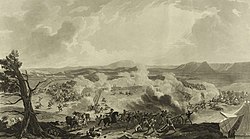| Battalion | Raising Date | Remarks | References |
|---|
| 1st Battalion § | 1775 | Raised as 5th Battalion, Bombay Sepoys. Converted to 3rd Battalion, Brigade of the Guards on 1 September 1949. Pre-independence : 28 battle honours, post-independence : battle honour Gadra Road | [17] |
| 2nd Battalion | 1817 | Raised as the 2nd Battalion, 10th Regiment of Bombay Native Infantry. Designated 120th Rajputana Infantry in 1903 and 2nd (Prince of Wales's Own), 6th Rajputana Rifles in 1922. Battle honours of Persia, Reshire, Bushire, Koosh-Ab, Mesopotamia, Shaiba, Kut-Al-Amara, and Ctesiphon. Captain John Augustus Wood won the Victoria Cross in 1856 at Bushire, Persia. Post independence battle honours – Poonch, Tololing and Drass; theatre honour – Kargil. | [18] [19] |
| 3rd Battalion | 1818 | Raised as 2nd Battalion, 11th Regiment of Bombay Native Infantry. Underwent many name changes, was designated 122nd Rajputana Infantry, before present designation. Battle honours –China, Afghanistan, Basra and Shaiba, Kut-Al-Amra, Baghdad, Mesopotamia, Irrawady, Mandalay and Fort Dufferin. Theatre honours – Persia, Mesopotamia, Burma 1932-34, Burma 1944-45, Jammu & Kashmir and Rajasthan. | [20] |
| 4th Battalion (Outram's) | 1820 | Raised on 26 May 1820 from elements which took part in the Battle of Khadki in November 1817, as the First Battalion of the 12th Regiment of the East India Company Indian Army. In the reorganisation of 1903, it took on the name of Sir James Outram and was designated the 123rd Outram's Rifles. Won two Victoria Crosses (Subedar Richhpal Ram and CHM Chhelu Ram), and 23 Battle/Theatre Honours during the pre-independence period. Post-Independence battle honours – Charwa and Uri, theatre honour Punjab 1965. | [21] |
| 5th Battalion (Napier's) | 1820 | Raised as 1st Extra Battalion of Bombay Native Infantry, underwent many changes, designated 125th Napier's Rifles in 1903 and present designation in 1945. Won one Victoria Cross in 1858 and 27 battle honours before independence. | [22] |
| 6th Battalion | 1962 | Nicknamed the Param Vir Chakra Paltan and Shooting Sixth, the regiment was raised in 1940 by Lieutenant Colonel NG Gane MC at Faizabad. Theatre honour Burma during World War II. CHM Piru Singh was awarded the PVC during the Indo-Pakistani War of 1947–1948. The battalion was awarded the theatre honour Jammu and Kashmir and battle honour Darapari. | [23] |
| 7th Battalion | 1962 | Raised 1941, fought in Malaya, disbanded at the end of war. Re-raised in 1962 at Delhi Cantonment. Battle honour Mynamati and theatre honour East Pakistan, 1971. | [24] |
| 8th Battalion | 1963 | Raised in 1941 and saw action in the Arakan Campaign, battle honour Rathedaung, disbanded 1947. Re-raised by Lieutenant Colonel JJ Lal in Delhi. | [25] |
| 9th Battalion | 1964 | Raised 1941 at Nasirabad, converted to an anti-aircraft regiment, disbanded 1945. Re-raised at Delhi Cantonment by Lieutenant Colonel C Silva. | [26] |
| 11th Battalion | 1964 | Raised by Lieutenant Colonel Risal Singh at Kanchrapara. Havildar Rajesh Kumar was posthumously awarded the Ashoka Chakra in 2010. | [27] |
| 12th Battalion | 1968 | Raised as 31 Rajputana Rifles on 15 January 1968 and re-designated as 12 Rajputana Rifles on 23 February 1971. Theatre honour : East Pakistan, 1971. | [28] |
| 13th Battalion | 1966 | Raised as the New Delhi by Lieutenant Colonel Jai Singh SM . Nicknamed Thundering Thirteen. | [29] |
| 14th Battalion | 1966 | Raised as 11 Rajputana Rifles (TA), disbanded 1947, re-raised 1966 by Lieutenant Colonel Harbhajan Singh at Golconda. Nicknamed Fighting Fourteen. | [30] |
| 15th Battalion | 1976 | | |
| 16th Battalion | 1979 | | |
| 17th Battalion | 1934 | Former Imperial Service Troops, raised as Sawai Man Guards of Jaipur State Forces, battle honour Ledi Gali during 1948 operations, absorbed into Indian Army in 1951. | [31] |
| 18th Battalion § | 1941? | Former Saurashtra Rifles, (Nawanagar State Forces); now 11th Mechanised Infantry Regiment. Battle honours Asal Uttar and Basantar. | |
| 19th Battalion | 1962 | Raised at Delhi Cantonment by Lieutenant Colonel SP Kutky. Captain Ummed Singh Mahra was posthumously awarded the Ashoka Chakra in 1971. Awarded theatre honour East Pakistan, 1971. | [32] |
| 20th Battalion | 1981 | Raised in Delhi Cantonment | [33] |
| 21st Battalion | 1985 | | |
| 22nd Battalion | | | |
| 23rd Battalion § | | Converted to 23rd Battalion, Parachute Regiment in 2013 | |
| 24th Battalion | | | |
| 9 Rashtriya Rifles | 1994 | | |
| 18 Rashtriya Rifles | 1994 | | |
| 43 Rashtriya Rifles | 2005? | | |
| 57 Rashtriya Rifles | | | |
| 105 (TA) Battalion | 1949 | Delhi Cantonment, New Delhi; nicknamed Rajputana Terriers | [34] |
| 128 (TA) Battalion | 1983 | Eco - Jaisalmer, Rajasthan | [35] |
|









